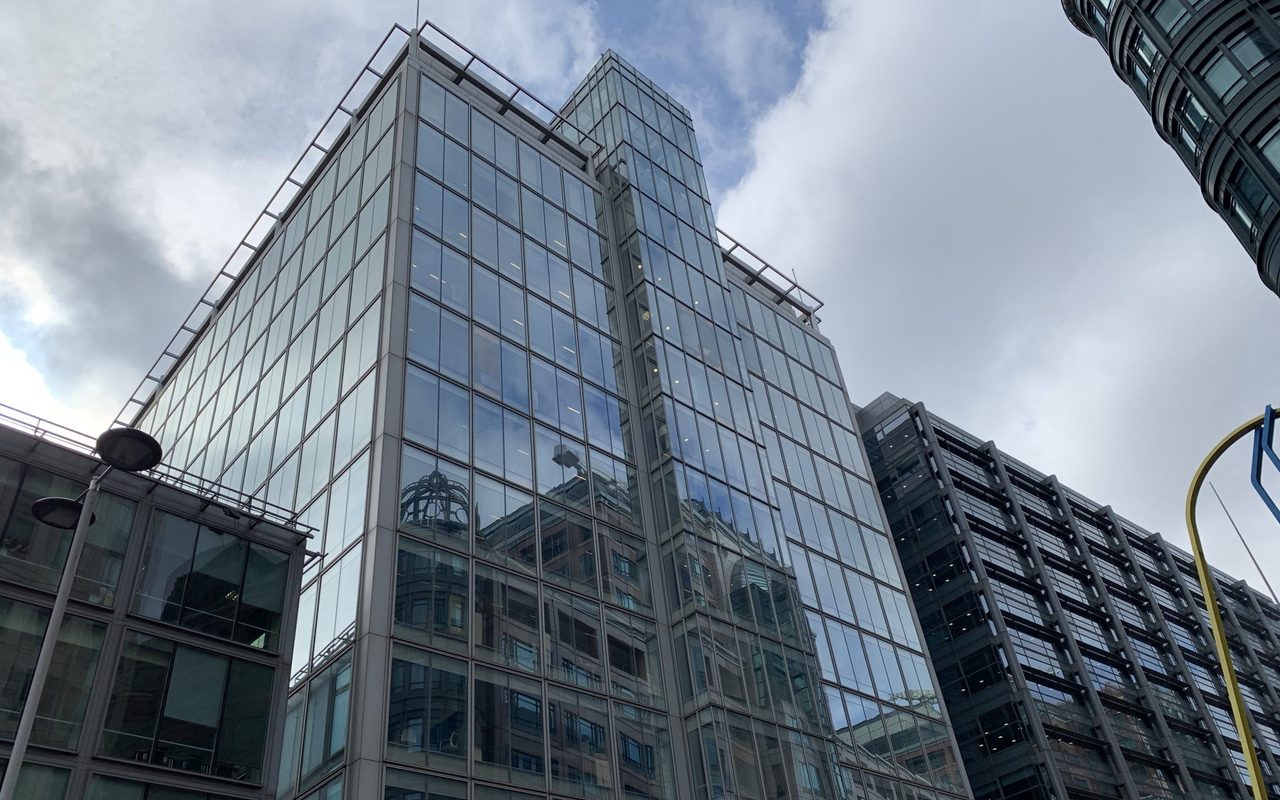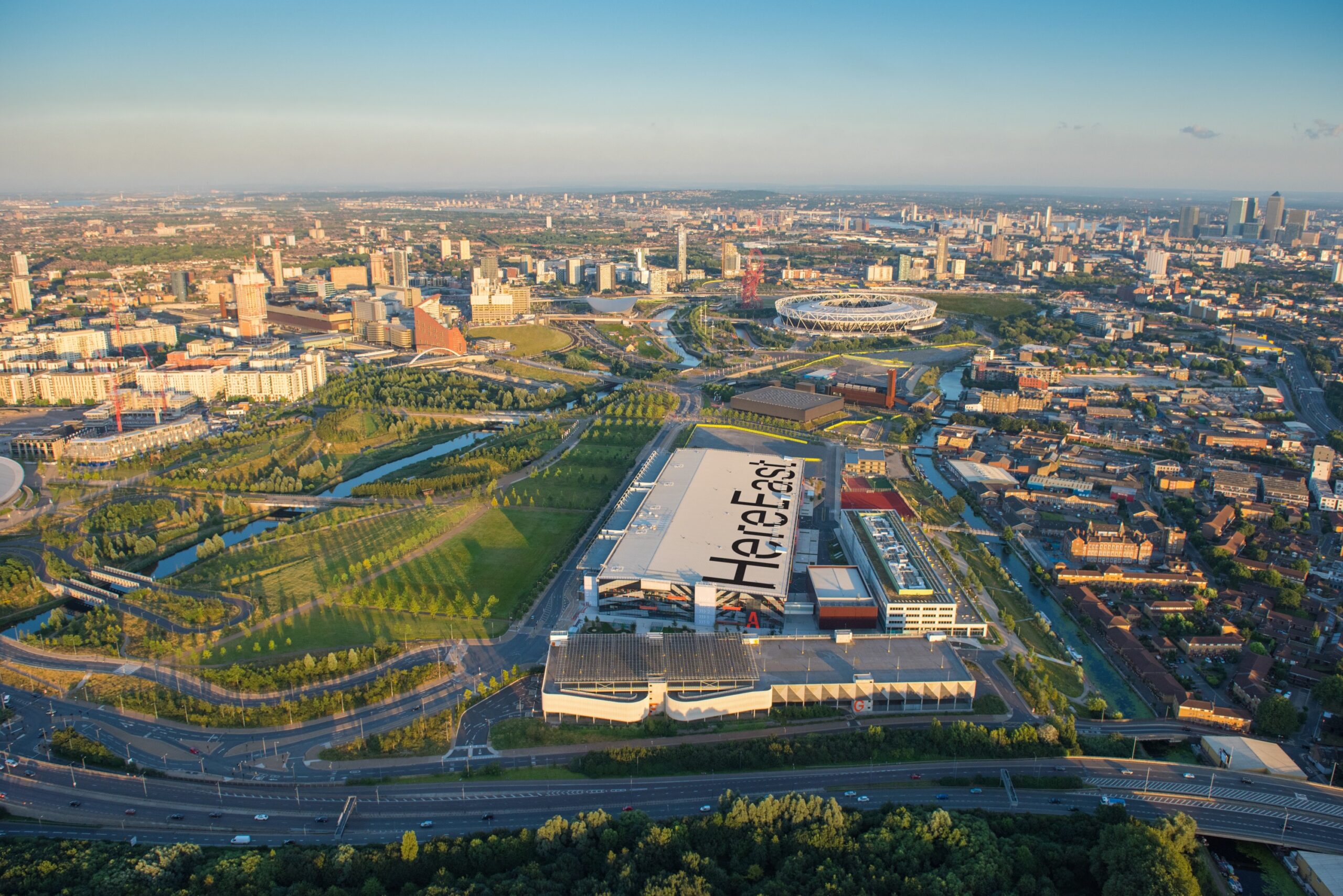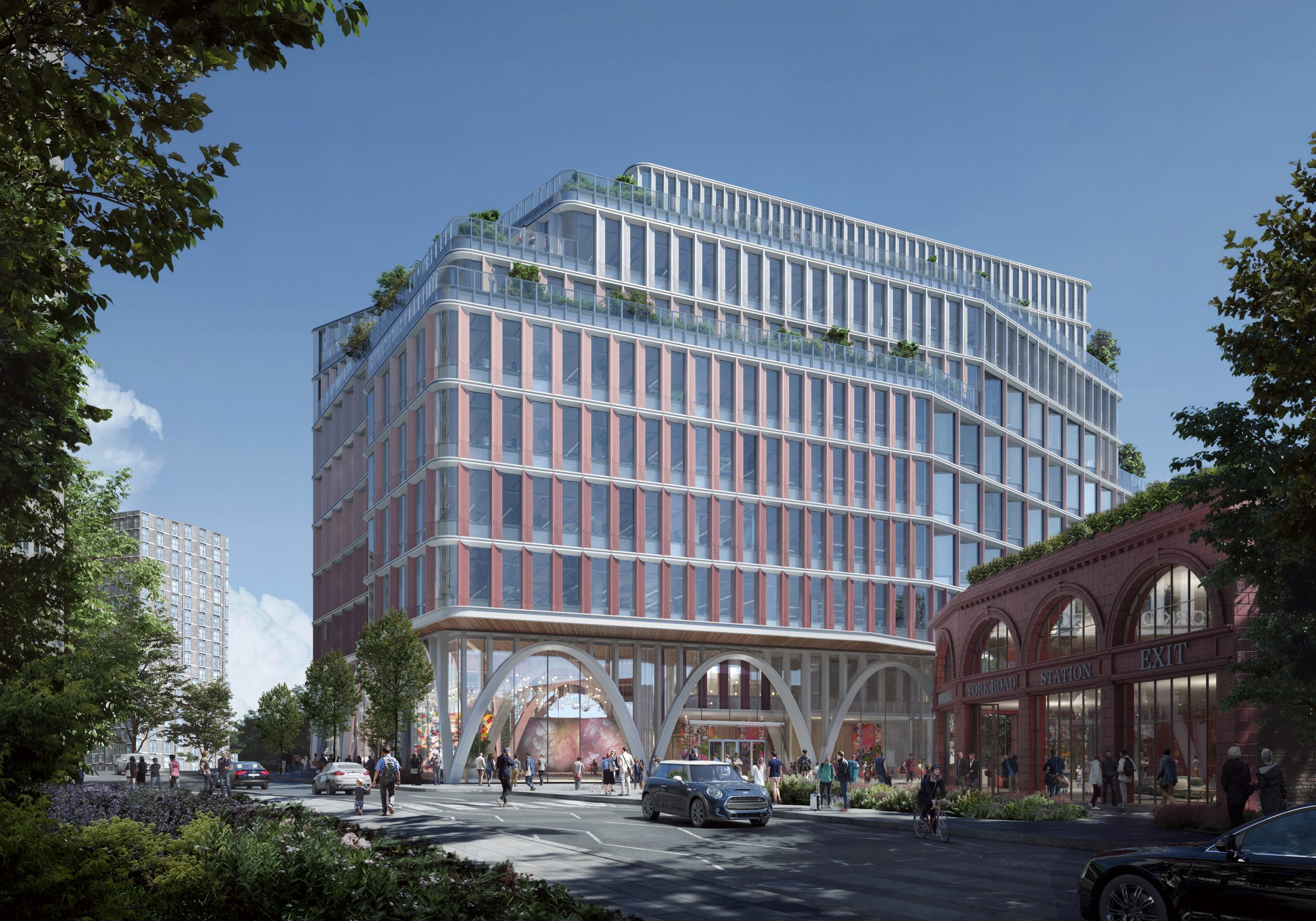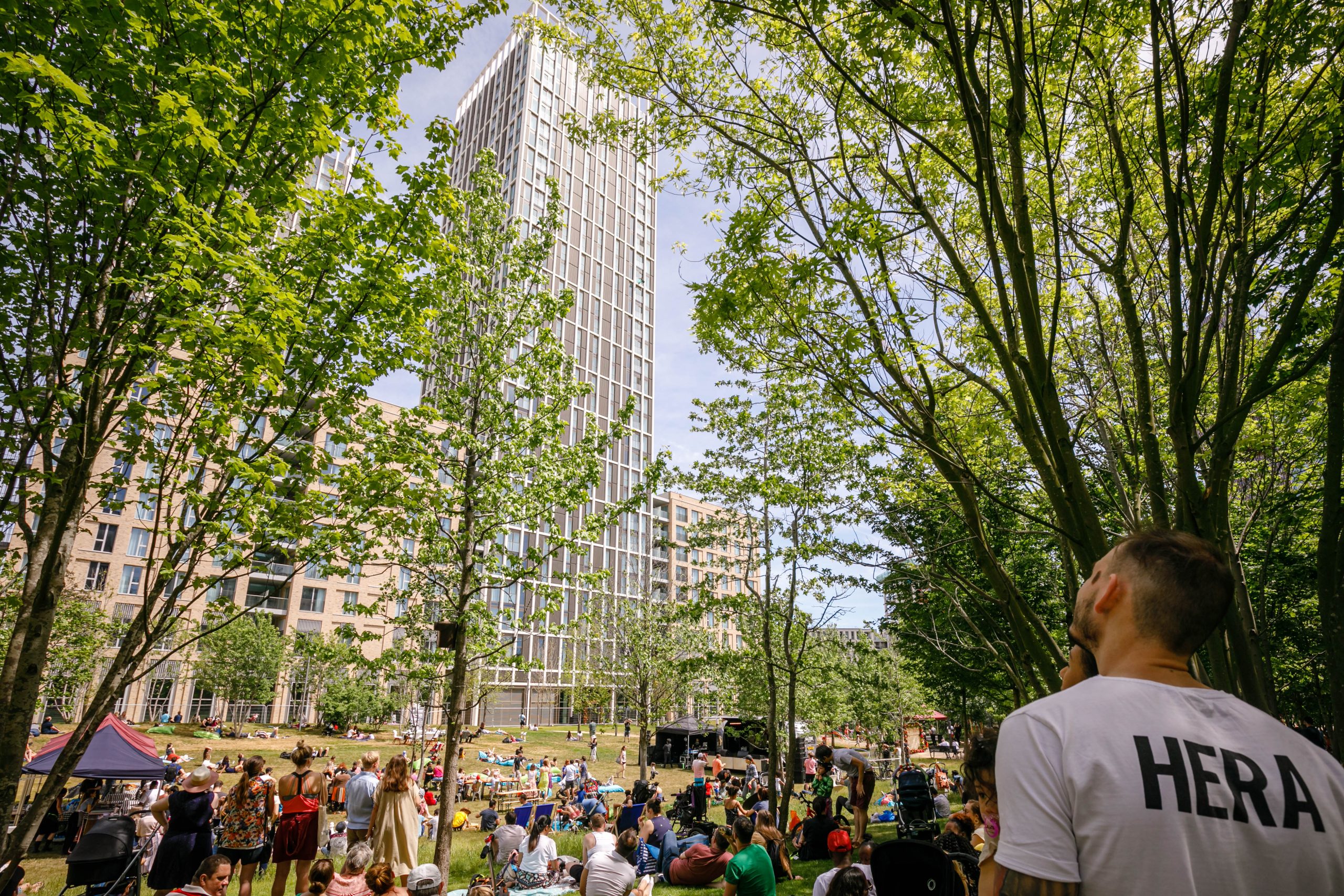
Blue plaque unveiled to George Harrison at his Liverpool birthplace, marking the opening of national blue plaque nominations to the public
Historic England has unveiled a national blue plaque to George Harrison – music icon, songwriter and humanitarian – at his birthplace, 12 Arnold Grove in Wavertree, Liverpool. One of the city’s most famous sons, George Harrison’s life and career had a phenomenal influence on British and global culture through music, film and humanitarian work. The blue plaque honouring Harrison will be unveiled where he was born- a two-up/two-down Victorian terraced house – by George’s wife Olivia Harrison and Historic England Chief Executive, Duncan Wilson, who will be introduced by journalist and Blue Plaques Panel Member, Samira Ahmed.
Olivia Harrison, George’s wife, said: “This blue plaque recognition of George’s birthplace is a source of family pride for all the Harrisons, and something that none of us, mainly George, would ever have anticipated. So much of who George was came from being born and spending his earliest years at 12 Arnold Grove, undeniably a part of who George was. He left a footprint on this world, on this country, in this city and on this street.”
The unveiling marks the start of the eight-week public nomination period for the new national blue plaque scheme. Everyone is invited to submit their own nominations for the person they would most like to see recognised with a prestigious Historic England blue plaque.
The national blue plaque scheme is run by Historic England on behalf of the Department for Culture, Media and Sport (DCMS). It is designed to highlight the stories of inspirational people, from all walks of life, who have made a significant contribution to human welfare or happiness.
Duncan Wilson, Chief Executive, Historic England said: “For many years, local residents and fans have longed for a blue plaque marking the place where George Harrison’s exceptional life story began. I am thrilled that we can make that a reality and we are now inviting people across England to submit their own nominations for the person they would most like to see recognised in this way. Blue plaques capture the lasting connection between people and places, inspiring local pride now and for generations to come.”
Culture Secretary Lucy Frazer said: “For almost 150 years the London blue plaque scheme has celebrated figures from the past, helping the public to learn about and honour the rich history of the capital. Now everyone across the country has the opportunity to nominate the people who shaped their local area.
“There can’t be a more fitting recipient to mark the opening of public nominations than one of Liverpool’s Fab Four, George Harrison. His skill as a musician and songwriter is celebrated all over the world and has inspired many to embark on a career in music, but it is here in the place of his birth that his legacy is strongest felt.
“I encourage everyone to think about the local heroes they want to see commemorated and nominate them for a blue plaque.”
Steve Rotheram, Mayor of the Liverpool City Region, said: “Throughout his incredible life, George would often come home to Liverpool to re-live the memories that shaped his childhood. His career might have taken him around the world – but he never lost his love for this city. “He was also a deeply spiritual man who used his platform to spread a message of peace and acceptance, which are values that Scousers are renowned for. It is for that reason that George will always be regarded as one of Liverpool’s greatest sons and it is wonderful to see a permanent tribute to his life in the community that helped to raise him.”
Public Nominations
Anyone can nominate individuals of their choice for a blue plaque via the Historic England website. This nomination window will close on 19 July.
To be eligible, the person being nominated must:
- Have died at least 20 years ago
- Have made a significant contribution to human welfare or happiness and/or who have made an exceptional impact in their field, community or on society at large
- Have at least one building associated with them that survives well and where a plaque would be clearly visible from a public highway. Blue plaques celebrate the relationship between people and places, for example where they were born, worked, lived or died. Because of this, plaques need to be on surviving buildings where there is evidence of a meaningful connection with the person commemorated.
The full criteria can be found on the Historic England website (link goes live from 24 May). As the scheme develops, nominations will also be open to commemorate groups of people (duos, groups, societies, organisations) and significant events.
Harrison’s childhood at 12 Arnold Grove
Harrison was born on 25 February 1943 at the two-up/two-down terraced house 12 Arnold Grove near Wavertree High Street and lived there until he was nearly seven years old.
George later wrote of the house, ‘To look at, it is just like ‘Coronation Street’: no garden, door straight on to the street … It was OK that house, very pleasant being little and it was always sunny in summer’ (Harrison, I Me Mine).
The youngest of four children, George grew up part of a tight-knit family. Music was an early interest, encouraged by his parents, although George did not actively start learning guitar until the age of 12 or 13.
The family had strong connections to Wavertree. George’s parents were born and grew up in the area and his maternal grandparents lived in the adjacent road, Albert Grove.
George’s family left Arnold Grove in early 1950 as they had finally reached the top of the housing list they’d been on for nearly 20 years.
“The quiet Beatle”
The youngest member of the Beatles, Harrison was just 17 when the band embarked on their trip to Hamburg in 1960- a period which allowed them to hone their performance and widen their reputation. He was 27 when they broke up in 1970. Known as the ‘quiet Beatle’, he was their lead guitarist and a talented songwriter.
Harrison met and befriended the Indian composer Ravi Shankar in 1965 and following the Beatles’ trip to India in 1966, he became greatly influenced by eastern music and philosophy. Harrison was taught sitar by Shankar from 1965 to 1968.
These new interests and skills were reflected in various songs he wrote for the Beatles, including ‘Within You Without You’ (1967) and ‘Only a Northern Song’ (1969). Other works by Harrison include ‘While My Guitar Gently Weeps’ (1968), ‘Here Comes the Sun’ and ‘Something’ (both 1969).
Solo career and legacy
After the Beatles split up, Harrison went on to achieve great success as a solo artist, producing the highly acclaimed triple album All Things Must Pass in November 1970, with hits including ‘My Sweet Lord’.
As co-founder of Handmade Films, George was also involved in culture-defining films such as Monty Python’s Life of Brian (1979), Time Bandits (1981) and Mona Lisa (1986).
Harrison was the first Beatle to score a number one single in the UK music charts after the band split up. He also arranged The Concert for Bangladesh in 1971, which was a music industry pre-cursor to the renowned Live Aid campaign.
In 1988 he formed the supergroup the Traveling Wilburys with Bob Dylan, Roy Orbison, Tom Petty and Jeff Lynne, who all appeared under pseudonyms on the band’s albums.





